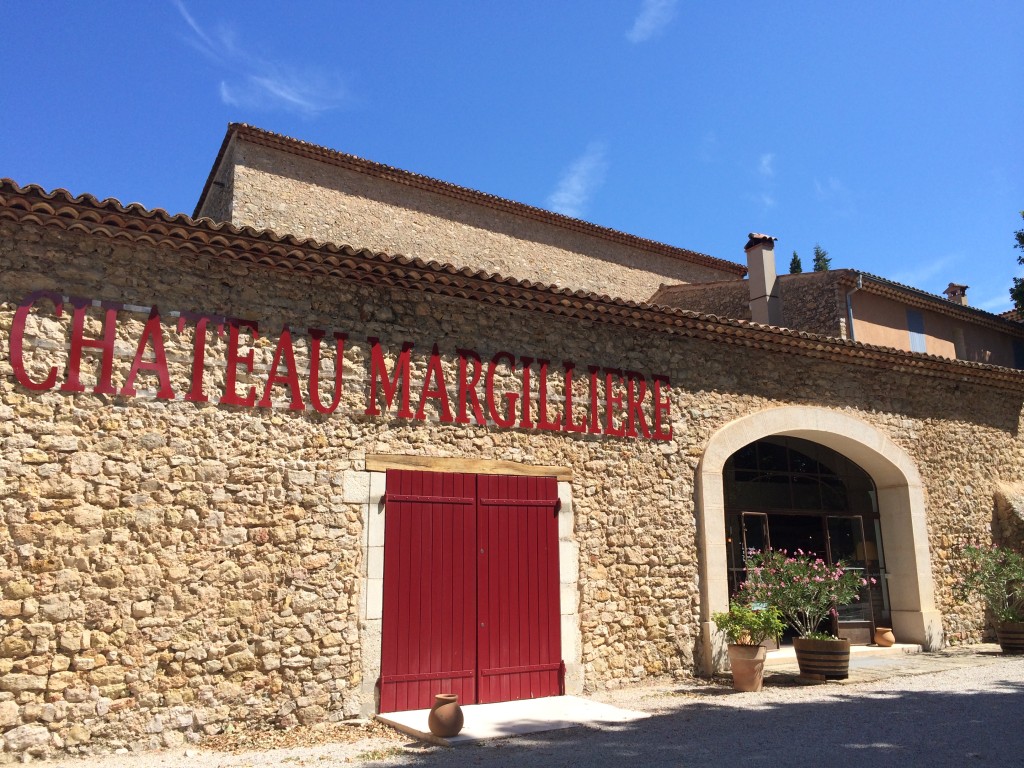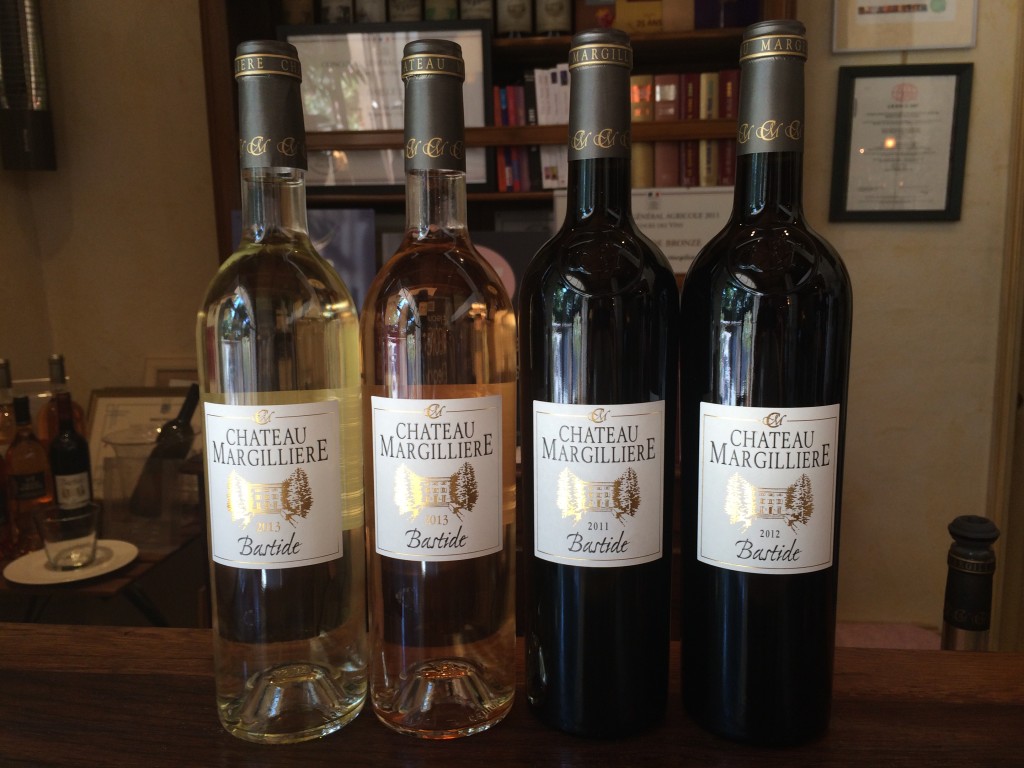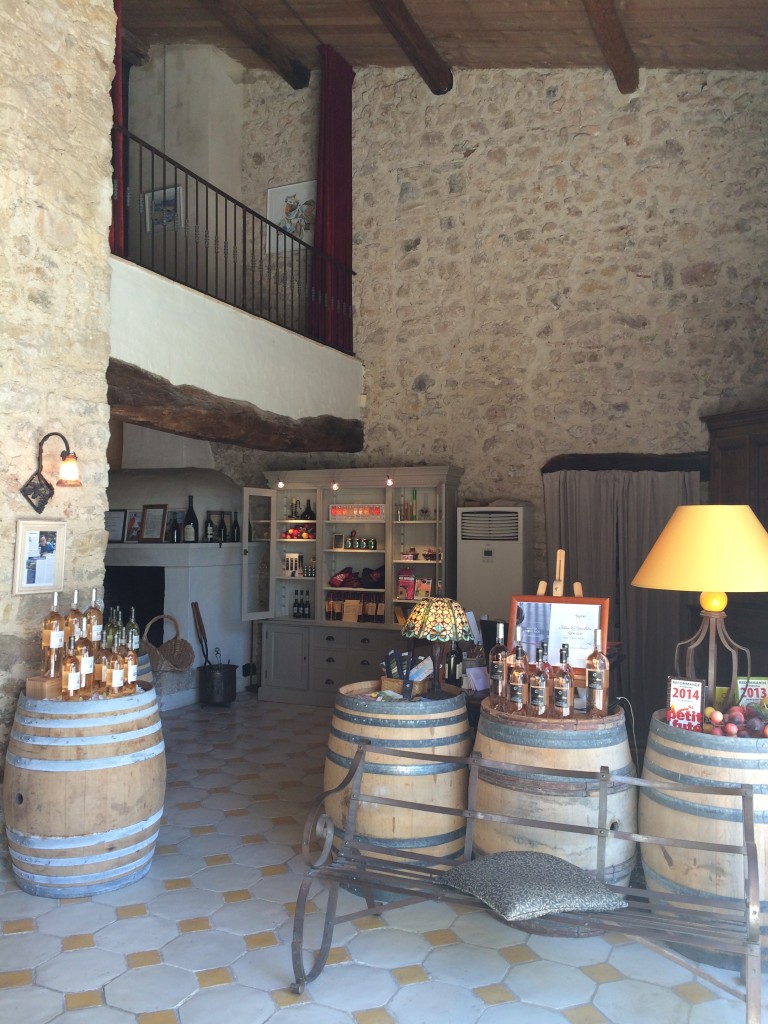Château Margilliere: slow wine in Provence honouring the world's oldest highway
Château Margilliere is a 17th century stone farm in the green countryside of Provence. The ancient times recalling stones rest stubornly all over the property as a distinctive feature of the current winery set along the Roman Via Aurelia. This was the oldest highway built over two millenia ago that sequentially connected Rome with the Northern territories of today’s Italy, France, the Iberian Peninsula, and beyond. In an archeological reverence, the stone walls were preserved here to define some of the farmland borders, and also forming a leveled system for growing olive trees.
The pebbles of Châteauneuf du Pape, the silex of Pouilly-Fumé and mainly the quality grapes nursing clay-limestone soil, they all through their specific natural roles ensure diverse expression of the blended wines at Château Margilliere.

Southern appellation squabble, where quality is superseded by prestige
Château Margilliere does not not fall into the more prestigious appelation of Côte de Provence, but this organic-certified winery fits into the local Côteaux Varois en Provence AOP. The difference being, as the chief winemaker said in his modest English “aside from hurt egos” negligent in terms of rules and quality measures.
With the manual harvest approaching the Florida dolphins t-shirt sporting winemaker had all the equipment cleaned and ready for the once-per-year accelerated action. Set just outside the old cellar was the hand sorting table to welcome the harvested bunches into the stainless steel tanks for the traditional whites and rosès or the concrete vats for the red grapes. After the fermentation some wines would be further aged in French oak barrels. Otherwise, the pace at the winery could not be more “slow food”. The sheep graze peacefully, the sun shines, and the vines slowly ripen their bunches for the September tralala. In the realm of slow life, the owners’ cats stretch along the tasting room, take a siesta on the cushioned chairs or promenade lazily on the cobbled stones surrounding the bastide.

Making organic wines is not challenging in most years. The prevailingly dry climate shields from fungus so no pesticides are needed. Some vintages, such as the 2014, trouble the winemakers and then the production is reduced to a bare minimum. This vulnerability of organic agriculture needs to be reflected in the price. Gravity manipulation of the wine at Château Margilliere is more gentle on the juices and is nowadays practiced at the best wineries.
Wines made at Château Margilliere
Wines from the 25 hectares under vines are bottled under two labels. The foundation being the more traditional Bastide in white, rosé and a fruity red. Rolle and Ugni Blanc blend into a light, perfect aperitif white wine. Grapefruit freshness with toasty depth of the Rolle create “a nice balance combining roundness and liveliness on the palate with aromas of honey and white peach.” My favorite from the winery, and as I learned also the multi-Michelin stared Alain Ducasse‘s, who allegedly served it with the meal after the civil wedding of Prince Albert and Charlene of Monaco.
The fragrant yet pale pink rosé imprints summer in your mind through its wild strawberry aromas and jasmine scents. Grenache and Cinsault make a typical provencal light pink wine perfect with the petits farcis nicois served at bistros like La Merenda on the Côte d’Azur. The fruity and quite tannic red is a tryptych of Syrah, Cabernet Sauvignon and Grenache, where spicy notes of Syrah define this animal food wine. The tanins call for a fatty cheese, meat or pâtè.


A level up in terms of price and longer barrel aging (new French oak from a Burgundian cooper) are three colours of the same varietal blends (as Bastide) of Hautes Terres, yet made from the oldest vines on the property. These decades old vines grow further uphil on the property. The red grapes are fermented in renovated concrete tanks and then matured in new oak barrels for Hautes Terres, and a maximum three years old for the other wines.
Mediterranean climate meets higher altitude that benefitis the red grape varietals, which could get too ripe along the coast, in particular in the areas where the cooling force of wind is too weak to fan the grapes faces enough.
The whites are aged on their lees in these new oak barrels acquiring more toasty flavour. The rosé is bolder than the Bastide blend, therfore it benefits from the right food pairing. Spicy Asian cuisine could hold its more generous nature. And finally the age-worthy red oozes licorice, leather and over time also elegant smooth tannins. A bespoke food wine.

Like at some of its not too distant neighbors (Bertaud-Belieu), bubbles were embraced. Made offsite by Méthode traditionnelle (second fermentation in the bottle), the white and rosé are both very dry. These sparkling wines cannot compete with Champagne since the dominant Ugni Blanc has a very different character from the Champenoise Chardonnay, Pinot Meunier and Pinot Noir. Its lower price though makes it a nice lunch spritz.
The two-level tasting room at Château Margilliere hosts regular art exhibitions and sells artisanal regional produce such as levander honey, marmalades (confitures), olive oil, black truffle verrines, and other local treats. Now in the hands of Pauline, the daughter of the recent owner Patrick Caternet, who restored the derelict property after purchasing it in 1996, continues the family saga of good organic wine makeing in the region.

Château Margilliere is about 10 minutes drive from Alain Ducasse‘s gourmet village retreat Hostellerie at the Abbaye de la Celle, so while there why not connecting the two pleasures together? Wine and great food love each other.
For my favourite rosè wines from Provence check this feature.
Mon-Sat: 9:30am-12noon & 2:30-6pm (summer 6:30pm)
Route de Cabasse, 83170 Brignoles, France
+33 4 94 69 05 34 (cave visits only by appointment)

